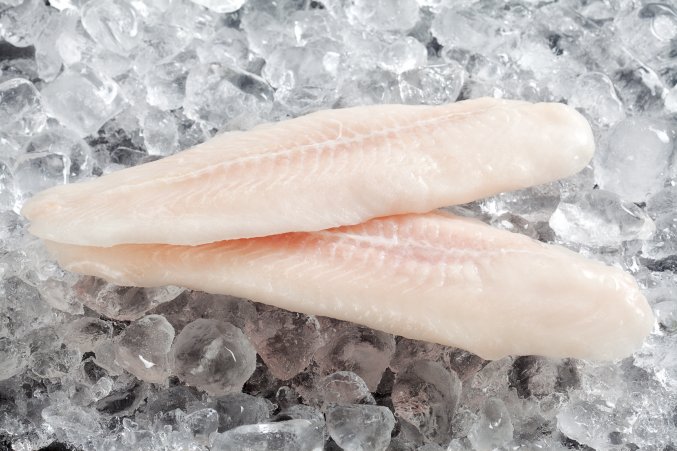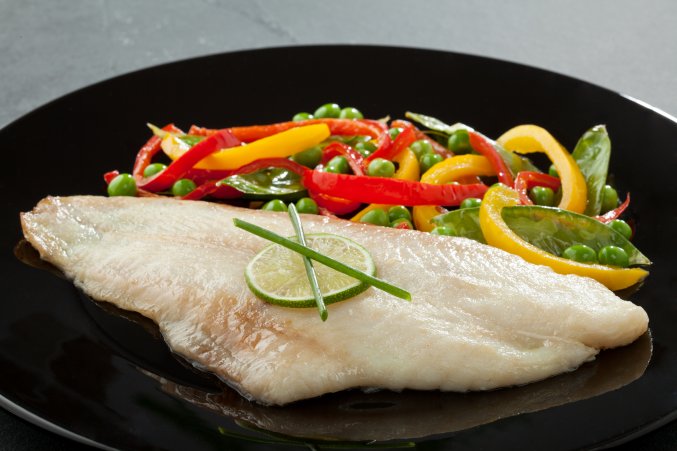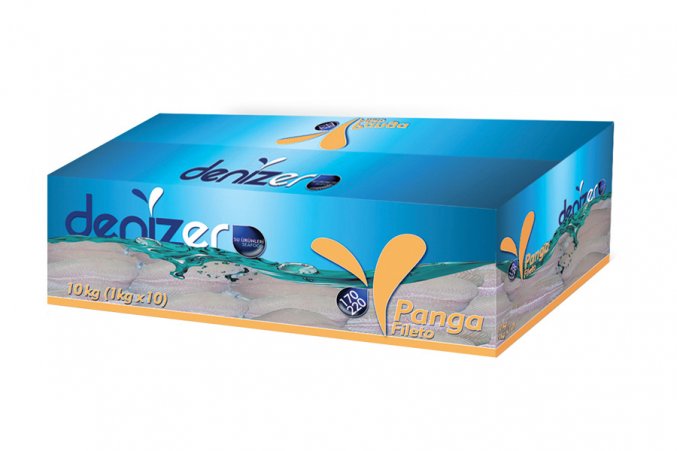Pangasius Fillets
Panga, a fresh water fish species in found in Vietnam, has gained a place in the market successfully in America in recent years. In natural environment it lives in Vietnam, Mekong River and Pangasius fries are placed in pools and farmed. They are harvested when they reach to 1-1.5 kg. Many of them are small-scaled family farms.
Panga has a low fat rate and white meat. They are presented as fresh or frozen and consumed as value added in high amounts. It is especially preferred in European Union and Australia.
Product Description
|
Product name |
Denizer Deep Frozen Pangasius Fillets 10 kg |
|
Latin name |
Pangasius hypophthalmus |
|
External barcode |
8680539200502 |
|
Internal barcode |
8680539200519 |
|
Size |
170-220 g / Size before glazing / Size after glazing √ |
Product description
|
After harvesting, panga is cleared of head, innards, bones and skin, filleted without all fat tissues, treated acc to EU standards, freezed immediately. After freezing, the product is packed in 1 kg polybag. |
|
Freezing type |
IQF (Individual Quick Freezer) |
|
Packing type |
10x1 kg polybag |
|
Ingredients |
Pangasius fillets (80%), water (20%) |
|
Production type |
Farmed √ / Catch (FAO : ) / Value added |
|
Origin |
Vietnam |
|
Units per package |
50-60 pcs/10 kg |
|
Glazing rate |
%20 |
|
Product type |
Boneless, PBI, fat off, well trimmed skinless fillet |
|
Broken pieces |
Max 1-2 pcs/10 kg |
|
Appearence |
White meat, specific appearence |
|
Smell |
Specific smell |
|
Taste |
Specific, not bitter or sour, natural taste |
|
Texture |
Strict, not dry |
|
Average weight |
180 g / kg |
|
Shelf life |
After production date, first 24 months |
|
Additives |
EU standard treatments (Maks ‰5) |
|
Outer package |
Min 4 colored printing microwave corrugated cardboard box (PAP) (26x49x18 cm) |
|
Inner package |
PE polybag with rider |
Packing criteria
|
The total migration value of components of plastic substances and materials to foodstuff, per square decimeter surface area of substance or material can not be more than 10 mgs. This value is defined as the limit of total migration of plastic substance and materials (mg/dm2). |
Storage conditions
|
Should transport and storage at min -18°C. Transportation should be without contamination and complete with no break of cold chain. |
Nutrition facts
|
Energy (kcal/100 g) |
70 |
|
Fat (g/100 g) |
1,5 |
|
Protein (g/100 g) |
16 |
|
Cholesterol (mg/100g) |
25 |
|
Na (mg/100g) |
26 |
|
Carbonhydrate (mg/100g) |
0 |
|
Vit A (%/100 g) |
0 |
|
Vit C (%/100 g) |
2 |
|
Ca (%/100 g) |
0 |
|
Fe (%/100 g) |
2 |
|
Omega 3 (g/100 g) |
10 |
Chemical Parameters
|
Hg (mg/kg) |
0,5 |
|
Cd (mg/kg) |
0,05 |
|
Pb (mg/kg wet weight) |
0,3 |
|
Total max dioxins (pg/g wet weight) |
3,5
|
|
Total max dioxins and dioxin like PCBs (pg/g wet weight) |
6,5
|
|
Total PCB28, PCB52, PCB101, PCB138, PCB153 and PCB180 (ng/g wet weight) |
75
|
Microbiological Parameters
|
Histamin (mg/kg) |
200-400 |
|
Salmonella spp(g-ml) |
0/25 |
|
Listeria monocytogenes (g-ml) |
0/25 |
Legal Criteria
|
GKGM Regulation on water intended for human consumption |
|
GKGM Regulation on microbiological criteria |
|
GKGM Regulation on contaminants |
|
GKGM Regulation on labelling |
|
GKGM Regulation on packaging waste control |
|
GKGM Statement of plastic materials in contact with foodstuffs |
|
Turkish Food Codex Regulation |
Determination of Net Weight
|
Remove package from low temperature storage, open immediately and place contents under gentle spray of cold water. |
|
Agitate carefully so product is not broken. |
|
Spray until all ice glaze that can be seen or felt is removed. |
|
Transfer product to circular No. 8 sieve, 20 cm (8”) diameter for packages #0.9 kg (2 lb) and 30 cm (12”) for packages >0.9 kg (2 lb). |
|
Without shifting product, incline sieve at angle of 17-20E to facilitate drainage and drain exactly 2 min. (stopwatch) |
|
Immediately transfer product to tared pan (B) and weigh (A). Weight of product=A-B |
|
*Acc to AOAC official method 963.18 net contents of frozen seafoods glazed foods |
Spawning
|
Jan |
Feb |
Mar |
Apr |
May |
Jun |
Jul |
Aug |
Sep |
Oct |
Nov |
Dec |
|
X |
X |
X |
X |
X |
X |
X |
X |
X |
X |
X |
X |






